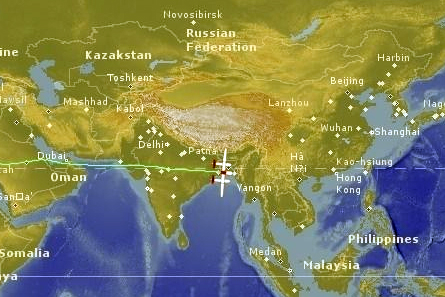Fuel losses, extreme heat within the cockpit and lower-than-expected jet stream wind speeds are threatening to end prematurely the Virgin Atlantic GlobalFlyer’s attempt to fly further than any aircraft.
The aircraft was experiencing severe turbulence over India as this flightinternational.com article was published (see below), but during its first 8h, since taking off from the John F Kennedy Space Center's space shuttle runway yesterday, ventilation cooling malfunctions saw temperatures rise in the cabin to between 40-54°C (105-130°F).

During the first 4h, GlobalFlyer lost 340kg (750lb) of its JP4 military aviation fuel, which is equivalent to a loss of 1,850km (1,000nm) range. The JP4 loss is believed to be due to the fuel vent system, which enables a release of vapour if fuel tanks’ pressure levels reach a certain level.
At the first mission control press conference following take off earlier today GlobalFlyer chief engineer and launch director Jon Karkow expressed his concerns. “It’s not sure they will make the mission. It’s going to be pretty tight,” he said.
He added that the jet stream winds needed to help propel GlobalFlyer the full distance were not currently as strong as expected over India. Equally, the Atlantic is expected to pose problems. This could see the aircraft having to land earlier than hoped.
Globalflyer, piloted by Steve Fossett, is aiming to fly 41,800km circumnavigating the world and continuing on to the UK’s Kent International airport. Speaking via radio to the press conference Fossett said: “It was an action-packed takeoff. After a shaky start with a few worries on the climb, things have now stabilised.”
The troubled flight saw a 24h launch delay due to a fuel leak and a double bird strike against the leading wing edge and a boom nose cone seconds after take off.
Despite this the aircraft has now flown over 16,500km with an average speed of 300kt (555km/h).
ROB COPPINGER / ORLANDO
Read Rob Coppinger's blog from the project's launch yesterday
External link:
Follow the attempt’s progress on the Virgin Atlantic GlobalFlyer flight tracker web page
Source: Flight International
















